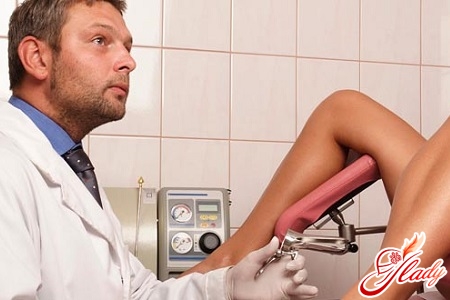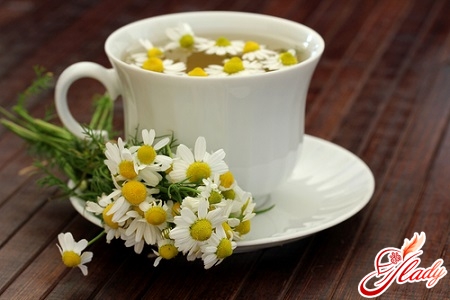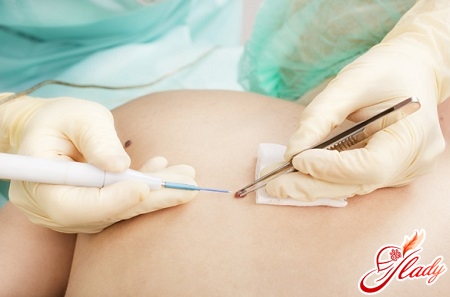 A lot of people face this problemnuisance, like warts. At first glance, they are all the same - well, a wart, what's special about it? But in fact, there are several types of warts, the treatment of which is also different. Therefore, first of all, consult a dermatologist who will examine your wart and determine exactly what type it is. The same doctor will quickly and completely remove the wart and prescribe antiviral drugs that will destroy the human papillomavirus, which, in fact, causes warts. Although it is worth noting that in most cases, warts can be gotten rid of without surgery - with the help of traditional medicine. But let's take everything in order.
A lot of people face this problemnuisance, like warts. At first glance, they are all the same - well, a wart, what's special about it? But in fact, there are several types of warts, the treatment of which is also different. Therefore, first of all, consult a dermatologist who will examine your wart and determine exactly what type it is. The same doctor will quickly and completely remove the wart and prescribe antiviral drugs that will destroy the human papillomavirus, which, in fact, causes warts. Although it is worth noting that in most cases, warts can be gotten rid of without surgery - with the help of traditional medicine. But let's take everything in order.
Varieties of warts
Let's try it firstunderstand what types of warts exist. in most cases, it is not that difficult to understand what kind of wart you are dealing with if you examine it carefully. But let's take things in order:
- Wart Common
The most common type is, of course,a common wart, because it occurs in more than 80% of all cases. This wart is a common benign neoplasm on the skin, not too large in size - most often its diameter does not exceed one centimeter. Such a neoplasm looks like a dense tumor of the skin, its borders are clearly defined, and the surface is very uneven. These warts are always round in shape, and the color is from yellow to dark brown. In some cases, the color can be so dark brown that the growth seems almost black. However, this color of the neoplasm is extremely rare. If the wart begins to change its color towards pink, immediately contact a dermatologist - there is a risk of degeneration of a benign tumor into a malignant one. Most often, such warts choose such places as elbows, knees, fingers, scalp, corners of the lips. By the way, doctors note the fact that most often warts are located on those areas of the skin that were previously injured. For example, on the knees. Well, which adult can compare the appearance of a wart on the knee with repeated falls on them in childhood? In most cases, such warts remain on the skin throughout a person's life. Of course, if a person does not treat this wart. Common warts rarely disappear on their own, so you should not even hope for this. And what's the point? Even with self-treatment, you will get rid of the wart in just a couple of months, not to mention medical intervention.
- Plantar Warts
Plantar neoplasms are, by the way,in essence, the same common warts, but located on the sole, as the name suggests. In fact, they also have an oval convex shape, but due to the fact that they are constantly under pressure from the entire weight of the body, plantar warts very quickly acquire a flat shape, and the skin around them becomes keratinized. By the way, in their appearance, plantar warts are very similar to calluses - very often people confuse them and try to cut them off. And they understand that they are not looking at a callus only when they discover that blood, not a clear liquid, is flowing from the upper part of the growth. By the way, such an attempt to cut off a plantar wart can end very sadly - the degeneration of a benign neoplasm into a malignant one. The color of plantar warts also varies from light to dark shades of brown to light. The keratinized skin around the wart also has a much darker pigmentation than the rest. The plantar wart is also insidious because in addition to the aesthetic aspect, there is a physical one - as it grows, painful sensations appear and increase all the time while walking.
- Pointed warts
A little less common in humans are pointed ones.warts, which are also often called pointed condylomas. In essence, these warts are nothing more than fibroepithelial neoplasms. Pointed warts resemble nodules with a sharp tip, both single and connected. If treatment of these warts is not started in a timely manner, they grow very strongly - a picture not for the faint of heart. Such warts are most often located on the inner thighs, shoulders, in the armpits, on the mucous membranes of the genitals and oral cavity. Depending on the location of pointed warts, they can be either white or red. By the way, red warts bleed very easily - try not to injure them. Firstly, it is very painful, since warts are very sensitive, and secondly, it is not so easy to stop the bleeding.
- Threadlike warts
The most unusual type of wart isfiliform warts. They got this name because of their shape - very elongated and narrow. Such warts are located exclusively on the face - most often on the eyebrows and lips. Although very rarely they can be seen on the neck. Apart from their shape, these warts are not remarkable in any way - they are brown in color.
- Flat warts
Плоские новообразования также выглядят очень unusual - they resemble flat nodules, absolutely smooth to the touch. Such neoplasms have a brownish color and are formed only on the face - on the cheeks or eyelids. By the way, a very interesting fact - it is quite difficult to find such a wart in an adult, since they develop mainly on children's skin.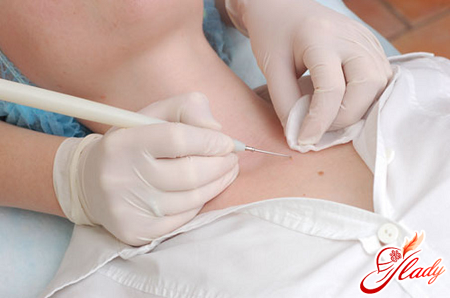
Medical removal of warts
The easiest way to get rid of warts is to go to the doctor. Modern medicine has many effective methods that will allow you to forget about the wart.
- Laser Wart Removal
The most popular method todaywart removal - laser beam. The procedure is virtually painless and takes only a few minutes. In addition, the laser ensures complete sterility during the procedure, due to which the healing process is very fast, without complications or pain. And no special care is needed during the wound healing period. After the removal site has completely healed, most likely, you will not even have a trace left. Maximum - a small depression, almost invisible to others.
- Electrocoagulation
There are some advantages to removing warts with high frequency current.a number of its advantages. Firstly, the current cauterizes the vessels that feed the wart, so the removal will be almost bloodless. Secondly, the likelihood that the neoplasm will form again is reduced, since the access of the papilloma virus to healthy tissues is blocked. But there are also several negative aspects. The wart removal procedure itself can cause painful sensations, and a scar often forms at the site of the removed neoplasm. Therefore, if the wart is on open areas of the body, it is better to give preference to another method of removal.
- Cryotherapy
Some doctors still use it forwart removal liquid nitrogen. This method has a number of advantages - it is completely painless, there is no blood at all, and no marks are left on the skin. But this is ideal. In practice, the situation is a little different - it is very difficult to control the depth of nitrogen exposure to the wart and only a truly experienced doctor can do this. Otherwise, if the freezing is not deep enough, the procedure must be repeated again. And if it is too deep - there is a high probability that healthy layers of the skin will be damaged. And you simply will not be able to avoid the appearance of scars, no matter how carefully you take care of the wound.
- Surgical removal
Surgical excision of benign tumorstumors, regardless of their type, doctors nowadays practically do not do, which, however, is not surprising. If the tumor is excised with a scalpel, it will not be possible to do without suturing. Accordingly, you will have a scar on your skin. In addition, do not forget that the procedure is quite traumatic, there is a lot of blood. This means that the risk of infection of the wound is very high, and it needs to be cared for very, very carefully.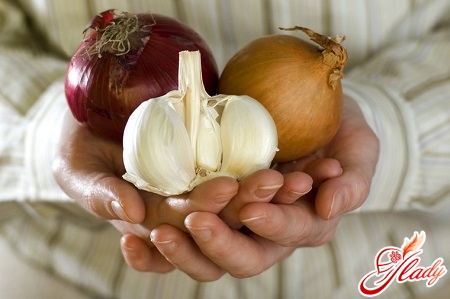
Folk recipes for wart removal
If you are not ready for medical removalwarts, you can try to get rid of them at home, using traditional medicine. But remember two very important things: firstly, you still need to see a doctor, at least to make sure that the neoplasm is really benign, and you can’t do without antiviral treatment if you don’t want new warts to appear. Secondly, under no circumstances should you use any traditional medicine recipes to treat children of pregnant women - they don’t need experiments.
- Garlic
Peel a few cloves of garlic, pass throughpress them through a garlic press or mash them in a mortar, add a little vegetable oil and stir. Apply the resulting mass to the area of the neoplasm, cover with a small amount of plastic wrap and leave for about 20 minutes. Normally, you should feel a slight burning sensation, but if the discomfort becomes too strong, wash off the garlic earlier. After the skin on the wart dries, lubricate it with baby cream. If the neoplasm is not very large, do the procedure every other day. Otherwise - every evening. In about a week and a half you will notice the first results, and in about a month you will not even remember about the wart.
- Onion
Peel a third of a small onionpeel, chop finely and place in a glass plate, pour apple cider vinegar so that the entire onion is covered with liquid. Leave it for about three hours - eventually the onion should become soft. After this, strain the onion, crush it and apply to the wart, bandage and leave for two hours. You will not feel any unpleasant sensations at all, but you need to keep an eye on the time, otherwise an inflammatory process may begin. Rinse the skin with warm water and lubricate with any vegetable oil. Repeat the procedure every evening if you want to ensure that in two months nothing even reminds you of the wart.
- Laundry soap
Another very effective way to removewarts - laundry soap. Moreover, only the simplest soap, without any fragrances, will do for your treatment. Grate the soap on a fine grater - you will need five tablespoons. Then pour it with apple cider vinegar, bring to a boil over low heat, stirring continuously. Turn off the heat and transfer the resulting mass to a glass jar with a lid. Apply a thick layer of soap mass to the wart, put a small gauze napkin on top, and place a plastic film on top, fix it with adhesive tape. Such a compress should remain on the wart for at least three to five hours, so it is most convenient to do it in the evening, when you are not in a hurry. Whatever method of removing warts you choose for yourself, remember that healthy skin around the wart is sensitive and it is highly undesirable for the finished product to get on it. You can avoid this by protecting your skin. The easiest and fastest option is Vaseline or any greasy cream. Just apply a thick layer to the skin around the growth. The second method is more difficult, but much more reliable. Take a small piece of adhesive tape, cut a hole in it big enough for the wart to fit through and stick it on tightly. That's it, your skin is protected. By the way, if you buy a hypoallergenic adhesive tape, you won't need to change it every day, while a regular one can cause an allergic reaction. And the last thing I would like to warn you about is that if you haven't managed to get rid of the growth on your own within two months, you shouldn't experiment any further. Go see a dermatologist! We recommend reading:





